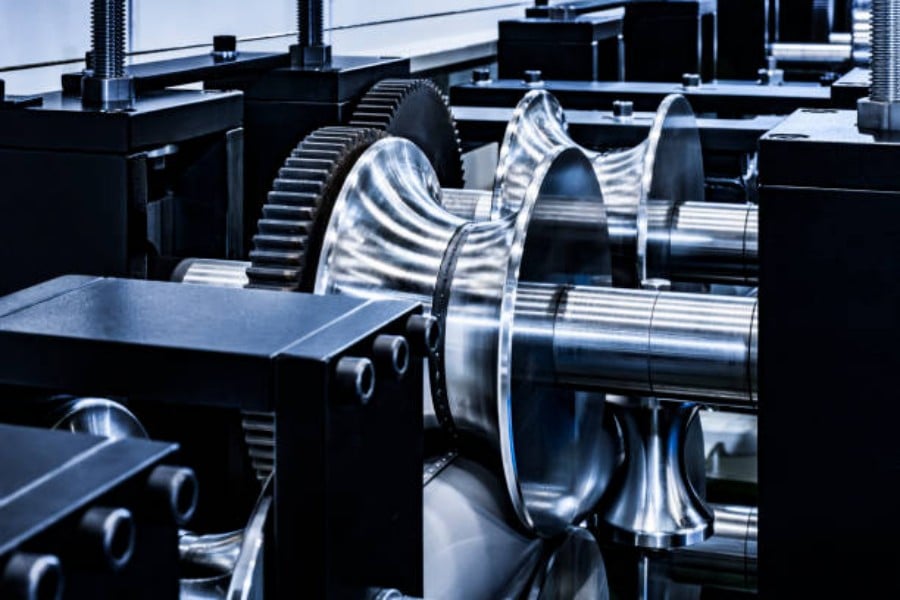The Definition of Trapezoidal Roof Sheet Roll Forming Machine
The trapezoidal roof sheet roll forming machine is a type of machine that is designed to form metal roofing sheets with a trapezoidal shape. It is a highly versatile machine that can work with various kinds of metals, including galvanized steel, aluminum, and copper.
The Benefits of Using Trapezoidal Roof Sheet Roll Forming Machine
One of the main benefits of using a trapezoidal roof sheet roll forming machine is its efficiency. It can produce large quantities of roofing sheets at a high speed, which is ideal for businesses that need to meet high demand. Additionally, the machine can be customized to produce sheets with specific dimensions and shapes to meet the needs of different projects.
The Components of Trapezoidal Roof Sheet Roll Forming Machine
A trapezoidal roof sheet roll forming machine typically consists of several components, including a decoiler, a feeding guide, a roll forming system, a cutting device, and a control panel. The decoiler is used to hold the metal coils, while the feeding guide ensures that the metal is fed into the machine properly. The roll forming system is responsible for shaping the metal into the desired trapezoidal form, while the cutting device cuts the metal into the appropriate lengths. The control panel is used to manage the entire process and to ensure that everything runs smoothly.
The Working Process of Trapezoidal Roof Sheet Roll Forming Machine
The process of forming trapezoidal roof sheets using the roll forming machine typically involves four stages: loading, forming, cutting, and unloading. First, the metal coil is loaded onto the decoiler, and the feeding guide starts to feed the metal into the machine. The metal gradually passes through the roll forming system, where it is shaped into the desired trapezoidal form. The cutting device then cuts the metal into the appropriate lengths, and the finished sheets are unloaded.
The Types of Trapezoidal Roof Sheets
There are several types of trapezoidal roof sheets that can be produced using the roll forming machine, including steel, aluminum, and copper sheets. Each type has its own set of characteristics and benefits, such as durability, corrosion resistance, and aesthetic appeal. The choice of material will depend on the specific requirements of the project.
The Maintenance of Trapezoidal Roof Sheet Roll Forming Machine
To ensure that the machine continues to function at peak efficiency, regular maintenance is required. This includes cleaning the machine after each use, checking for any signs of wear and tear, and lubricating the moving parts. Additionally, any damaged parts should be promptly replaced to prevent further damage to the machine.
The Applications of Trapezoidal Roof Sheet Roll Forming Machine
The trapezoidal roof sheet roll forming machine is used in many industries, such as construction, automotive, and manufacturing. It is mainly used to manufacture roofing sheets for commercial and industrial buildings, but it can also be used to produce other metal components, such as gutters and fascias.
The Cost of Trapezoidal Roof Sheet Roll Forming Machine
The cost of a trapezoidal roof sheet roll forming machine can vary depending on several factors, such as the size, complexity, and features of the machine. On average, a basic machine can cost between $20,000 and $30,000, while a more advanced machine with additional features can cost upwards of $100,000.
The Leading Manufacturers of Trapezoidal Roof Sheet Roll Forming Machine
Several manufacturers produce trapezoidal roof sheet roll forming machines, including Bradbury Group, KNUDSON, LOTOS, and RISHBIN. These manufacturers offer a range of machines with different features to meet the needs of different businesses.
The Future of Trapezoidal Roof Sheet Roll Forming Machine
The trapezoidal roof sheet roll forming machine industry is poised for significant growth in the coming years, driven by the increasing demand for metal roofing sheets in the construction sector. Additionally, the development of advanced technologies and materials is expected to lead to the production of more efficient and versatile machines that can meet the needs of various industries.

